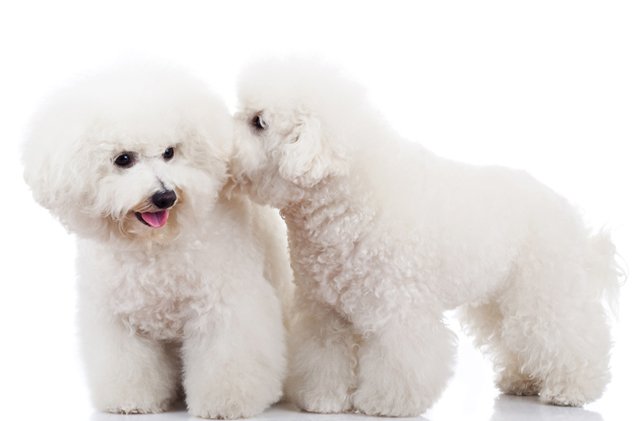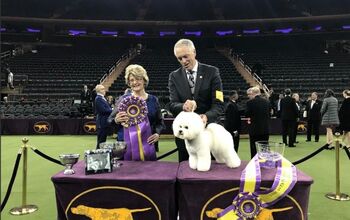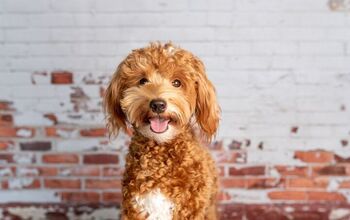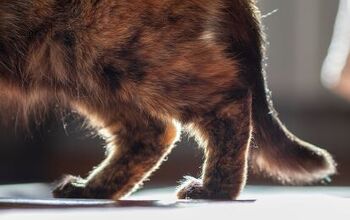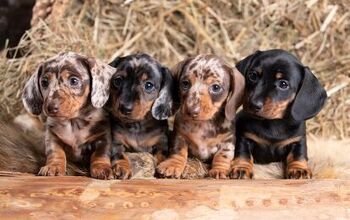Bichon Frise


About Bichon Frise
Just when you think you’ve gotten all the dog breeds figured out, you take a look at a dog that looks like a Maltese and find out that it’s not a Maltese at all – it’s actually a Bichon Frise. Fantastic! More time studying dog breeds is clearly called for, which means you get to expand your knowledge of pets just a little more.
Okay, so maybe not everyone likes homework. With that in mind, let’s get it all out of the way and focus on this curious dog known as the Bichon Frise, French for “curly white lap dog.” Hey, the French are nothing if not a little bit literal.
This dog can be considered a large toy dog and, while it looks similar to the Maltese, does have some distinctions that make it a breed in and of itself. And although the fluffy white coat can intimidate potential dog owners who don’t like the idea of a lot of grooming, the Bichon Frise is surprisingly low-maintenance, meaning that they’re not big shedders and won’t be a hamper on that roommate of yours with dog allergies.
Convinced that the Bichon Frise is a unique breed worthy of study yet? Good. Because we’re about to focus on the individual characteristics of this French breed that will help you to understand why so many people walk around with Maltese-looking dogs that actually have all the positive qualities of that other breed, the Bichon Frise.
This curious dog is known as the Bichon Frise, French for “curly white lap dog.”
The Bichon Frise is, predictably, a French breed. As you can glean from the root word “Bich,” the name of the dog has its root in quite literal and old French translations. Like the Maltese, the different Bich breeds came from the Mediterranean area and have a long history throughout the Europe and European trade. Sailors would bring similar breeds around with them and, thanks to its cheerful personality, these dogs would be a hit, especially in locations like Spain. Later on, Italian nobility found these breed types to be very enjoyable and no doubt gave them plenty of lap time.
This background in sailing can still be evidence as the breed can sometimes enjoy swimming and retrieving, although the Bichon Frise is certainly not a hunting or retrieval dog. Throughout history, the Bichon Frise has enjoyed French attention from the courts of Napoleon III to the streets of Paris. The breed was formally recognized in the recent centuries just as many dog breeds have been.
The Water Spaniel and the Standard Poodle resemble the Bichon Frise and it’s no wonder: those can be considered two direct ancestors to the Bichon Frise. The Barbet Spaniel – sometimes another name for the Water Spaniel – should be noted, as you may find some articles that reference this pedigree.
The dog found a variety of homes over the ages in countries like Spain, France, and Italy and have even traveled to the Canary Islands before being transported back to the European homeland. These breeds – like the Maltese and the Bichon Frise – have enjoyed a rich and varied history as being a favorite to nobility and royalty as well as the more common classes throughout Europe. Their cheerful personalities have been a favorite even leading into the modern era.
Whole foods including good cuts of meat are great for the Bichon Frise. It might be easy to spoil them, but be sure that they receive a steady diet of whole, natural foods that they’ll be able to enjoy. Don’t over feed them.
Italian nobility found these breed types to be very enjoyable and no doubt gave them plenty of lap time.
Generally, the Bichon Frise is a worry-free dog in terms of training, perhaps a reason they were so popular in the trading world of Europe where it would be easy to acquire a dog and acclimate it to ventures such as sailing and bartering. It might require a little bit of patience to deal with the Bichon Frise if you’re a first-time dog owner, but proper training will go a long way in this breed. Being sure to socialize this dog with other dogs early on is a good idea.
Larger than the Maltese in many cases, the Bichon Frise should weigh anywhere from 10-20 pounds, depending on its overall frame and possibly its gender. This is a small dog appropriate for laps and if you notice your dog feeling a little bit too cumbersome on your lap while you’re watching television, then you can be pretty sure that you’ll want to give your dog more exercise.
Cheerful and energetic, the Bichon Frise was a favorite with old European sailors just as they are in homes across Europe and America today.
Let’s talk about your health for a moment: the Bichon Frise is considered an allergy-friendly dog that has been bred to work well with humans who are allergic. But it’s important to spend time around a Bichon Frise to understand that it does leave some hair around despite its reputation as being a non-shedder.
In terms of disease propensities, autoimmune diseases plague this breed so it will be important to ask your veterinarian about the warning signs of diseases in the Bichon Frise.
Living around 12-13 years with a healthy life is typical for this kind and size of dog.
Regular exercise and play should be a daily regimen for the Bichon Frise. Giving it plenty of social interaction at the same time is always a plus in order to keep the pet’s mood well-regulated and stable.
You’ll want to keep this white, puffy coat well-groomed and properly brushed, but the dog is not a bred that will shed all over your carpet, either.
Listing the Bichon Frise as “cheerful and happy,” the American Kennel Club notes that this breed is a “naturally gentle, playful dog.”
The coat of the Bichon Frise can actually be a subject of debate, such as the amount of grooming is required. You’ll want to keep this white, puffy coat well-groomed and properly brushed, but the dog is not a breed that will shed all over your carpet, either.
Playful and energetic even as adults, be sure to give your puppies plenty of time and room to explore but don’t let it cross over into becoming too independent. Be sure to socialize these dogs early on with well-behaved dogs from your neighborhood.
Photo credit: Viorel Sima/Shutterstock

Amy Tokic, Editor of PetGuide.com, is a passionate animal lover and proud pet parent of Oscar, a Shih Tzu/Chihuahua cross, and Zed, a Japanese Chin. Her love of animals began in kindergarten, when she brought her stuffed dog Snoopy into class with her every day. Now, she writes about her adventures in pet ownership and tirelessly researches products, news and health related issues she can share with other animal enthusiasts. In her free time, Amy loves perusing used book and record stores, obsessing over the latest pet products available and chasing squirrels with wild abandon (a habit attributed to spending too much time with her pooches).
More by Amy Tokic



